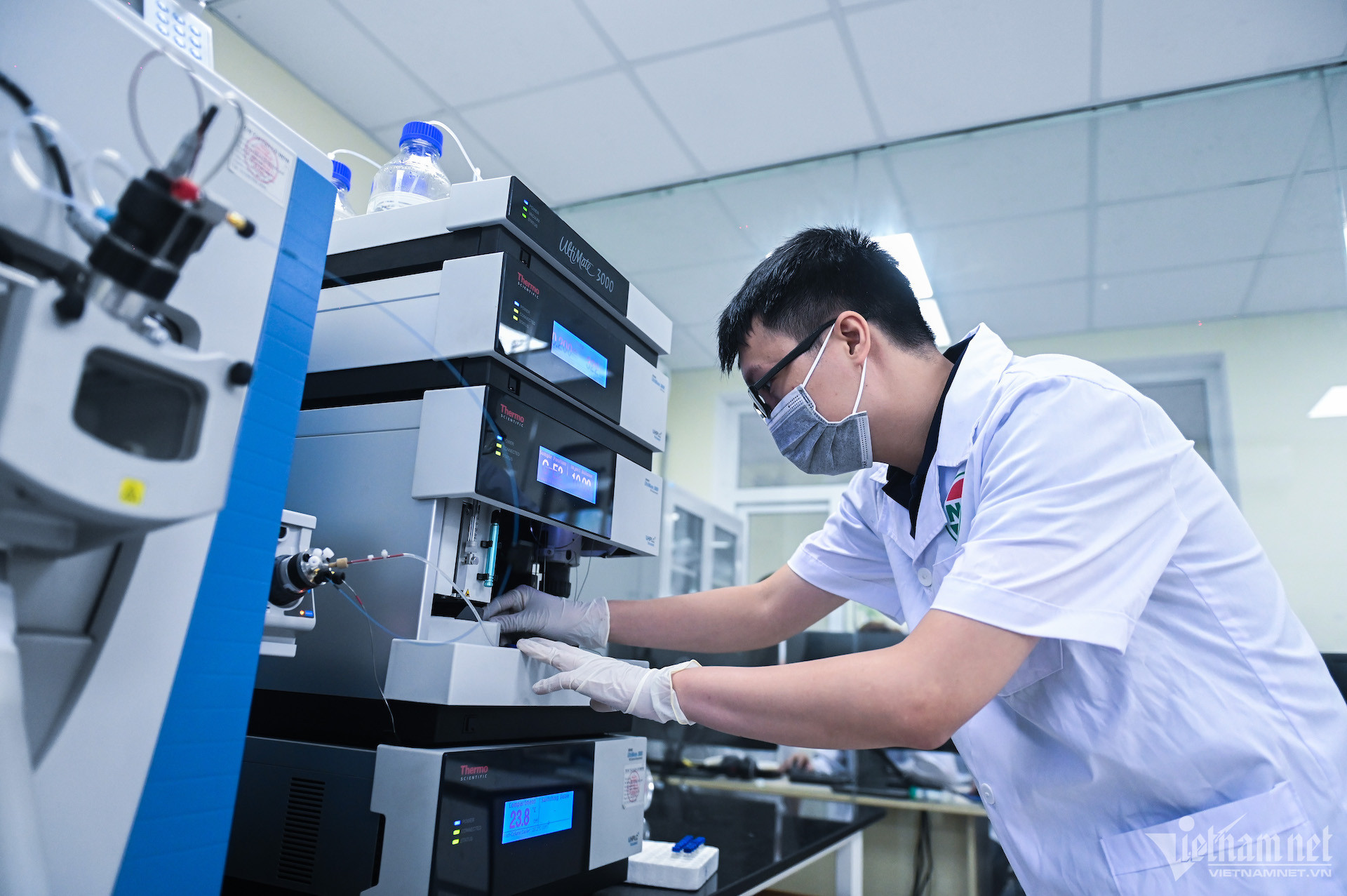
In food poisoning cases, both doctors and examiners have to run against time to find the cause of poisoning. The number of poisoning cases is on the rise, and chemicals used in these cases are diverse. In some cases, the contaminants cannot be found in medical literature.
Several years ago, Dr Tran Cao Son from VNTEST Institute for Quality Testing and Inspection, was nearly finishing his working day when he received a call from the Poison Control Center under Bach Mai Hospital which said a group of foreign patients had been poisoned after drinking fruit-soaked liquor. It was unclear what had caused the problem.
Immediately, the sample of liquor suspected of causing the problem was transferred from Bach Mai Hospital to VNTEST. A consultancy council was established and its members began running against the clock to analyze the factors to find the culprit.
VNTEST has seven labs. To find the cause of poisoning (chemical, physical, and microbiological agents), experts use all the labs to analyze food and blood samples.
Son said a single phenomenon can be caused by many elements and compounds, including unheard of ones, so it is necessary do analysis at many labs at the same time.
The institute’s experts thought that the problem might have been caused by rat poison, pesticides or other drugs and chemicals.
At that time, VNTEST had just been equipped with a modern high-resolution chromatography mass spectrometry machine. It helps discover new compounds that may exist in food. The agency remains the only unit that owns this high quality equipment.
The seven labs then worked round the clock after receiving the samples suspected of causing poisoning. Finally, examiners found pyrogallol, an agent causing hemolyze in liquor samples.
“Pyrogallol is mentioned in medical literature, which says this is an agent harmful to human health. However, there was no information saying that the substance was used in food,” he recalled.
Test results are an important factor to help clinicians find correct therapies. They also act as scientific evidence for agencies and medical units to warn the community against risk, and also help discover the individuals who must take responsibility for their behavior.
Constant worries
At VNTEST, groups of officers are on duty, including holidays and weekends, who receive samples and conduct tests at any time.
“It is usual for us to receive calls at night from localities, state agencies and hospital. And it is not a surprise if we have to depart at any time for localities many hours of travel from Hanoi,” Son said.
A challenge for examiners is the time to conduct tests and give results as soon as possible. The testing of chemicals and toxins can help discover the cause. But sometimes poisoning is caused by microorganisms. In these cases, it takes 3-6 days or longer to find the cause of the poisoning.
For example, examiners need several days to analyze samples and conclude if samples contain botulinum.
The biggest difficulty for examiners occurs when there is no food sample left, except for clinical samples. If so, doctors have to consider the clinical symptoms and other factors such as epidemiology and interviews to get supporting data.
“In fact, we can find the exact cause of poisoning in only 70 percent of cases,” Son said. “In many cases, though there are suspected food samples, examiners still cannot find the exact cause of poisoning."
Officers have to go to the sites to track down clues. According to Son, in many cases, examiners cannot find toxins in food samples, but they can find bottles of plant protection chemicals and herbicides on the site where victims are found. The examiners then take water and vegetable samples for testing.
Vo Thu